

Home
About Us
Allotments
Garden Equipment
Seed Suppliers
Manure Problems
Children's Pages
GLA Blog
Weather Blog
School Veg Patch
Useful Links
Fruit Pressing, Storing & Drying and Drying Herbs
** This website is not a shop and doesn’t sell anything! **
Be aware that any external links may contain cookies and you should refer to the particular website's cookie policy
Fruit Picking
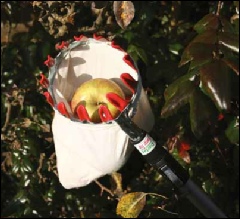 Once fruit trees have grown fairly large picking the fruit can be a challenge. Often the choicest fruit just seem out of reach. Our plum trees on the plot are at this stage as are an apple and a pear tree in our garden We often resort to wielding a pair of long handled loppers to cut off the fruit and a fishing net to catch it. It does require quite a bit of effort so some may prefer to buy a purpose made fruit picker. The one on the right would fit the bill for apples and pears but maybe not our plums. Amazon do have a range of pickers some of which are advertised as being suitable for most fruit.
Once fruit trees have grown fairly large picking the fruit can be a challenge. Often the choicest fruit just seem out of reach. Our plum trees on the plot are at this stage as are an apple and a pear tree in our garden We often resort to wielding a pair of long handled loppers to cut off the fruit and a fishing net to catch it. It does require quite a bit of effort so some may prefer to buy a purpose made fruit picker. The one on the right would fit the bill for apples and pears but maybe not our plums. Amazon do have a range of pickers some of which are advertised as being suitable for most fruit.
Storing hard fruits
You won’t be able to eat all your fruit immediately and so will have to store it in some way. Any blemished apples should be used first. You could stew some and freeze them for use later in pies, crumbles or puddings. You can also use some as ingredients in jams and chutneys.
You are likely to want to store some apples and pears. They store best in a cold but frost free place where the atmosphere isn’t too dry. We store ours in an old fridge in the garage which seems to woks a treat. If you don’t have an old fridge then storing in a frost free shed, cellar or garage should be fine. It is usually too warm and dry to store fruit inside the house. If your home is comfortable for you then it isn’t likely to provide good storage conditions for apples and pears.
The fruit needs to be stored so that they don’t touch their neighbours - the phrase one bad apple can spoil the rest is very true. If one fruit begins to rot, the rot will spread quickly if fruits touch. If you do need to pack fruit tightly then each fruit should be wrapped in paper. You may be able to get hold of the cells used to pack apples by supermarkets as many supermarkets discard these.
There are also special storage racks available such as the one below.
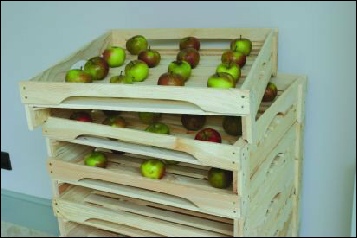
Harrod Horticultural have a range or harvesting and storage equipment here and here
Managing fruit gluts
We usually have more fruit than we can manage to use at any given time and so we have to look to ways of storing our fruit. Much of it we freeze as a sort of compote. We also find that apples store really well in a fridge - we’re lucky in that we have one that was discarded from the kitchen.
I know lots of people will use up any fruit gluts by making jams and jellies but we don’t really eat jam.
Fruit can also be dried.
Another way that we haven’t tried yet is to use up hard fruits such as apples and pears by pressing to make your own fruit juices. You can even turn your fresh fruit juice into cider or perry.
If you have small quantities of fruit to juice then this can be done without and special equipment but for large amounts a fruit press and or crusher may make the job easier.
Apparently you can also use fruit presses the squeeze juice from grapes, blackberries, raspberries and elderberries. You are also supposed to be able to freeze the fruit juice.

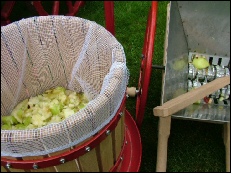
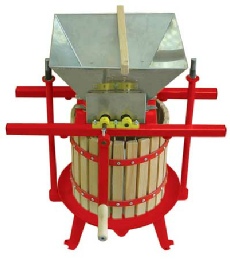
Fruit presses shown here and more are available from Harrod Horticultural
Drying Fruit
Drying as a means of storing food has been around for centuries and as experiencing something of a revival.
Fruit can be dried using an oven set at a very low temperature - basically as low as the oven can be set. Drying at higher temperature can produce a hard skin.
Dried fruit can be eaten as it is maybe mixed with a breakfast cereal but it can also be reconstituted by soaking in water for a few hours before using it.
If you intend to dry lots of fruit you may wish to invest in a dehydrator which can also be used to dry vegetables and herbs.
Drying Herbs
Some herbs will continue to provide a crop throughout winter - that is if they are not hidden under a covering of snow.
One way of having a supply of herbs for winter use is to dry them. Herbs can be air dried by a hanging small bunches upside down in an airy place. The bunch of herbs should be hung inside a brown paper bag (if you can get hold of some). Some holes made around the top of the bag will allow air to circulate better so that the herbs don’t become mouldy.
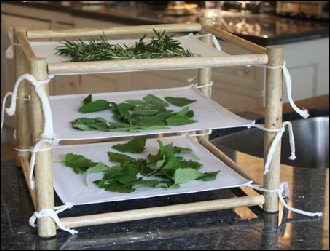 The herbs will need to be hung in a warm, dry but airy atmosphere and checked every couple of weeks for signs of mould. Any mouldy sprigs will need to be discarded.
The herbs will need to be hung in a warm, dry but airy atmosphere and checked every couple of weeks for signs of mould. Any mouldy sprigs will need to be discarded.
An alternative method is to use a herb dryer as supplied by Harrod Horticultural.
I also freeze chopped herbs to use over winter.
If you really want to dry lots of fruit you may even want to invest in a dehydrator. Amazon offer these in a range of sizes and prices.
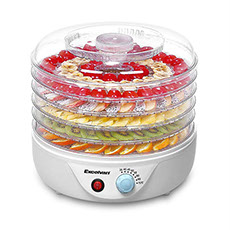

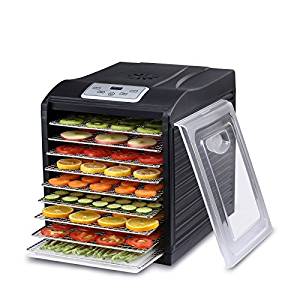
I’ve gathered together some links from companies offering gardening products for sale. I have no connection to the suppliers and therefore cannot be held responsible for any changes in items available or any issues that may arise when making a purchase.
Some companies give me a small commission on sales that are generated from this website which helps me to maintain this and sister websites but this in no way means that I am recommending purchases from a particular company.
Our Plot at Green Lane Allotments Blog | A Gardener's Weather Diary | School Vegetable Patch Website
© Our Plot on Green Lane Allotments - Please email me if you wish to use any of this site's content